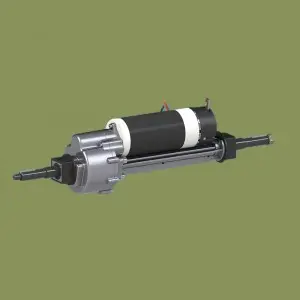The transaxle is an important part of a vehicle’s drivetrain, responsible for transmitting power from the engine to the wheels. It combines the functions of transmission, axle and differential into one integrated unit. The transaxle plays a vital role in determining a vehicle’s performance and efficiency, so it’s important for vehicle owners to understand its specifications and features.
One of the most common problems car owners encounter is how to determine whether their vehicle’s transaxle is the 660 or 760 model. This distinction is important because it affects the vehicle’s overall performance and maintenance requirements. In this article we will explore the differences between the 660 and 760 transaxle models and provide insight on how to identify the type installed in your vehicle.
The first step in identifying your transaxle model is to find the vehicle’s nameplate or sticker. This plate is usually located in the engine compartment or on the driver’s door jamb and contains important information about the vehicle, including the transaxle model number. Transaxle models are often designated by a specific code or number to indicate their type and size.
For vehicles equipped with the 660 transaxle, the identification code may include the number “660” or a similar designation that corresponds to that specific model. On the other hand, vehicles equipped with a 760 transaxle will have an identification code containing the number “760” or a corresponding designation. It’s important to note that the exact location of the transaxle model code may vary depending on the make and model of the vehicle, so consulting the owner’s manual or consulting a professional mechanic may be helpful in locating this information.
In addition to the identification plate, another way to determine the transaxle model is to visually inspect the unit itself. 660 and 760 transaxle models may have different physical features or markings to distinguish them. These differences may include changes in the shape and size of certain components, as well as specific labels or brands indicating the transaxle model.
Additionally, vehicle owners can consult the vehicle manufacturer’s official documentation or online resources for detailed information on the model of transaxle installed in their vehicle. Manufacturers often provide technical specifications and part numbers for different transaxle models, allowing owners to cross-reference this information with the actual unit in their vehicle to confirm their model number.
Understanding the differences between the 660 and 760 transaxle models is important for a number of reasons. First, it affects transaxle replacement part selection and maintenance procedures. Different models may require specific components or fluids to ensure optimal performance and longevity. By knowing the transaxle model, vehicle owners can accurately identify and purchase the parts and materials needed for maintenance and repairs.
Additionally, the transaxle model affects the overall performance and functionality of the vehicle. While the 660 and 760 transaxle models serve the same basic purpose of transmitting power to the wheels, they may differ in transmission ratios, torque capacity and efficiency. Understanding the specific characteristics of a transaxle can provide insight into a vehicle’s driving dynamics and fuel economy, allowing owners to make informed decisions about maintenance and upgrades.
In summary, identifying whether a vehicle is equipped with a 660 or 760 transaxle is an important aspect of vehicle ownership and maintenance. Owners can determine the specific model of their transaxle by referring to the vehicle’s nameplate, visually inspecting the transaxle unit, and consulting official documentation. This knowledge enables them to make informed decisions regarding maintenance, repairs and upgrades, ultimately contributing to optimal vehicle performance and longevity.
Post time: Apr-12-2024


